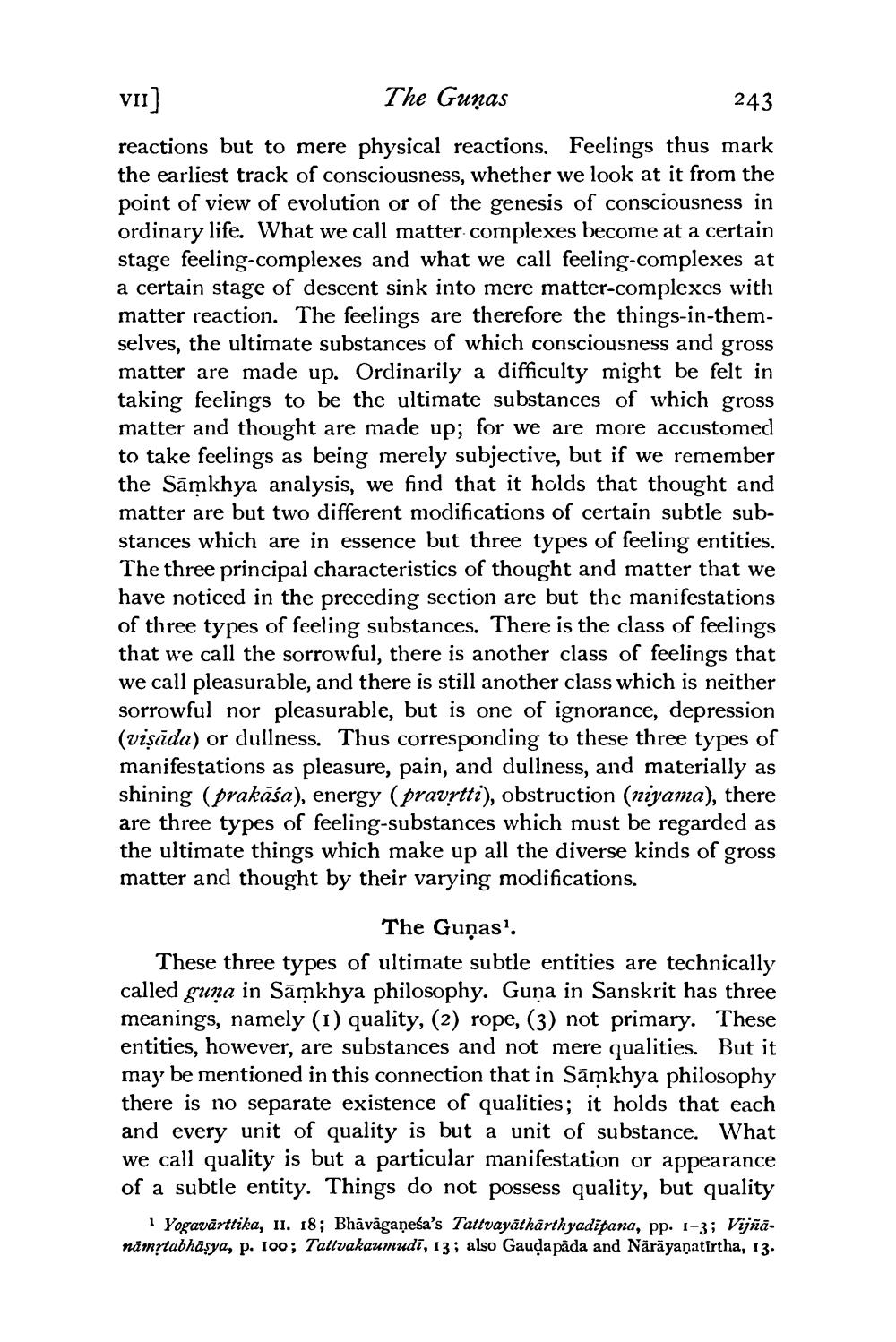________________
243
VII]
The Gunas reactions but to mere physical reactions. Feelings thus mark the earliest track of consciousness, whether we look at it from the point of view of evolution or of the genesis of consciousness in ordinary life. What we call matter. complexes become at a certain stage feeling-complexes and what we call feeling-complexes at a certain stage of descent sink into mere matter-complexes with matter reaction. The feelings are therefore the things-in-themselves, the ultimate substances of which consciousness and gross matter are made up. Ordinarily a difficulty might be felt in taking feelings to be the ultimate substances of which gross matter and thought are made up; for we are more accustomed to take feelings as being merely subjective, but if we remember the Sāmkhya analysis, we find that it holds that thought and matter are but two different modifications of certain subtle substances which are in essence but three types of feeling entities. The three principal characteristics of thought and matter that we have noticed in the preceding section are but the manifestations of three types of feeling substances. There is the class of feelings that we call the sorrowful, there is another class of feelings that we call pleasurable, and there is still another class which is neither sorrowful nor pleasurable, but is one of ignorance, depression (visāda) or dullness. Thus corresponding to these three types of manifestations as pleasure, pain, and dullness, and materially as shining (prakāśa), energy (pravrtti), obstruction (niyama), there are three types of feeling-substances which must be regarded as the ultimate things which make up all the diverse kinds of gross matter and thought by their varying modifications.
The Guņas'. These three types of ultimate subtle entities are technically called guna in Sāmkhya philosophy. Guna in Sanskrit has three meanings, namely (1) quality, (2) rope, (3) not primary. These entities, however, are substances and not mere qualities. But it may be mentioned in this connection that in Sāmkhya philosophy there is no separate existence of qualities; it holds that each and every unit of quality is but a unit of substance. What we call quality is but a particular manifestation or appearance of a subtle entity. Things do not possess quality, but quality
1 Yogavärttika, 11. 18; Bhāvägaṇeśa's Tattvayäthärthyadipana, pp. 1-3; Vijñānämrtabhāsya, p. 100; Tattvakaumudī, 13; also Gauda pada and Nārāyanatirtha, 13.




